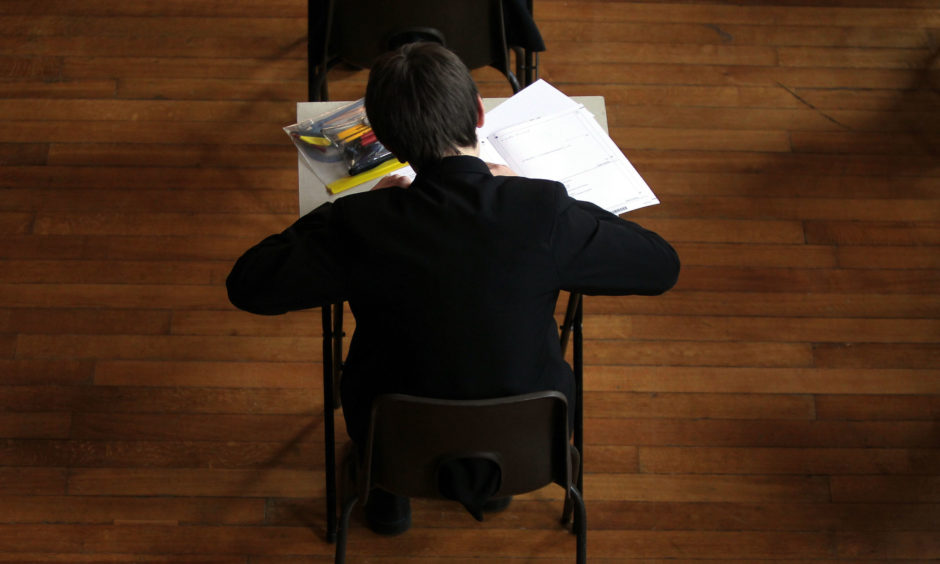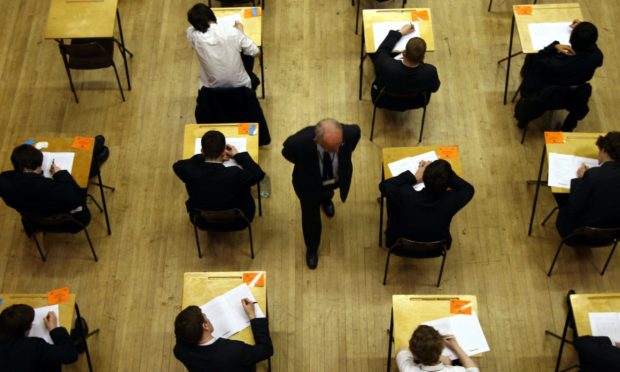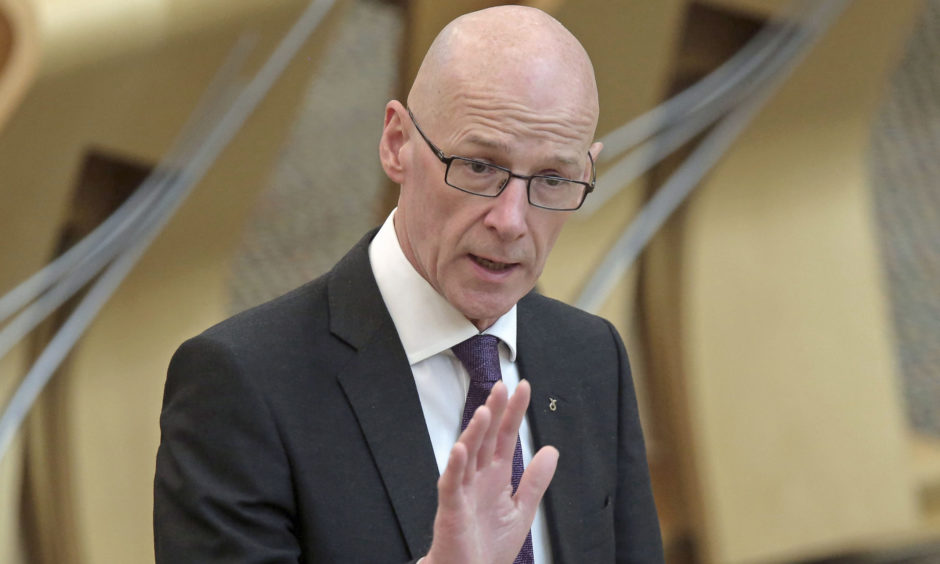A decision will be made by mid-February on whether Higher and Advanced Higher exams will take place next year.
Education Secretary John Swinney said “contingency measures” would be considered in case they could not go ahead due to the pandemic.
It was previously announced that National 5 exams would be cancelled, with Higher and Advanced Higher provisionally due to go ahead in May.
The February deadline for a decision means pupils could face a further three months of uncertainty, with many having already been caught up in a storm of controversy over the awarding of grades earlier this year.
Mr Swinney told MSPs on Holyrood’s education committee it was important any alternative to awarding school grades would be “fair to all pupils”.
‘Don’t quite know what course of pandemic will be’
He said a working group including local authorities, teaching unions and the Scottish Qualifications Authority (SQA) is looking at how National 5 courses will be assessed and “contingency measures” should the Higher and Advanced Higher exam diets not go ahead.
The education secretary said: “My clear priority is to run the 2021 Higher and Advanced Higher exam diet but I’m also mindful of the fact that we don’t quite know what the course of the pandemic will be, and what degree of disruption will be experienced by individual pupils, or by schools or by the system.”
The SQA would also review the process for pupils appealing their grades, he added.
In response to a question from Labour MSP Daniel Johnson, he said he “unreservedly” accepted there was a problem with applying the statistical model to this year’s qualifications.

Earlier on Wednesday morning, the committee heard from Professor Mark Priestley, who carried out a review into the issues around exams during the pandemic.
He said many in the education sector felt the SQA lacked transparency and did not trust others with technical details.
Prof Priestley said: “It maybe stems from a cultural expectation within the organisation that the expertise resides with them and it doesn’t reside elsewhere.
“And that may work perfectly well in normal years but in the year of a pandemic, extraordinary circumstances and extraordinary measures, then perhaps there was a need for a more open, collaborative working approach.”
Giving out bad news…
Asked about the SQA at the later session of the committee, Mr Swinney said: “I think what we all have to accept is that the SQA, invariably every year, has to be an organisation that gives out news to people that they would rather not receive.
“Because they are saying to some pupils, ‘I’m afraid you didn’t get the grades that you were looking for’.
“That’s tough and difficult but it had to be done if we want to maintain standards throughout our examination system.”

